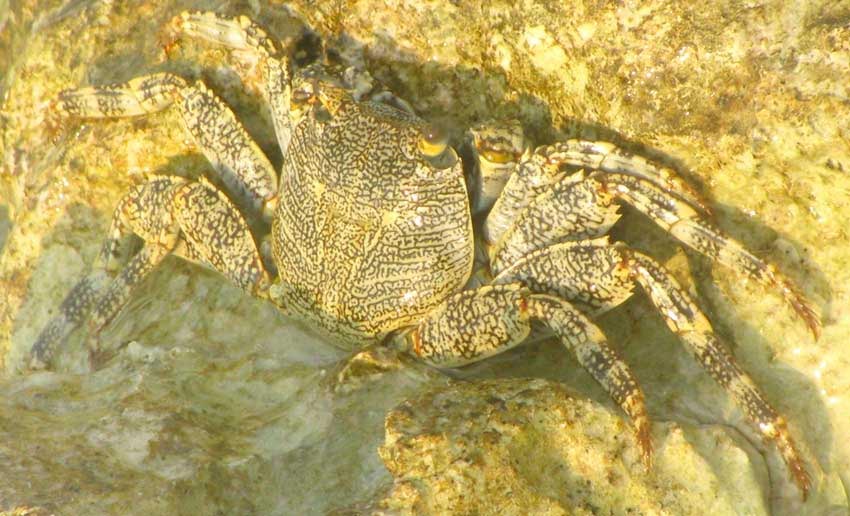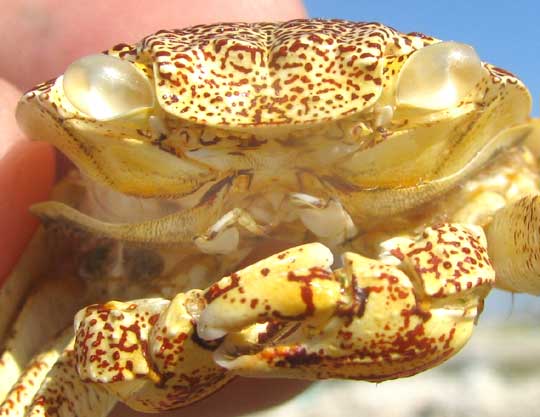Excerpts from Jim Conrad's
Naturalist Newsletter

from the May 29, 2011 Newsletter issued from Mayan Beach Garden Inn 20 kms north of Mahahual; Caribbean coastal beach and mangroves, ~N18.89°, ~W87.64°, Quintana Roo state, MÉXICO
SALLY LIGHTFOOT
At the rocky point just up the beach, three things immediately became apparent: First, it was a high tide about as high as they get. Second, atop nearly every rock barely projecting above the waves there was a crab. Third, this crab species wasn't the Ghost or Hermit Crabs we tend to see here. You can see one above.
Never had I seen crabs atop those rocks, and never since have I seen them. Obviously something was going on that day that I don't understand.
Because this was such a distinctly patterned crab species I figured that volunteer identifier Bea in Ontario would have an easy time learning its name, but she didn't. It turned out that we had a very variable species. Still, eventually we did decide that it must be what people often call the Sally Lightfoot Crab, GRAPSUS GRAPSUS.
Sally Lightfoot, who mostly eats algae on wet rocks in the intertidal zone, occurs along the coasts of subtropical and tropical America, Africa, the Gulf of California, and Chile. The species varies tremendously in color, and juveniles can look very different from adults. Ours, with its cream-colored speckles, is a juvenile. Most photos on the Internet show bright red adults.
On the other hand, descriptions of the species' behavior found on www.TheCephalopodPage.org's page for the species describes exactly what I saw:
"G. grapsus becomes frequently submerged by breakers washing over it during feeding. During this encounter the crabs press their flattened bodies to the rock and cling on until the waves recedes. They emerge from the surf and continue feeding as if nothing had happened."
At another rocky point a few kilometers away and later in the week I came upon an abandoned Sally Lightfoot shell, or exoskeleton. Crabs have the same problem as insects: They are encased in shells which periodically must be split open, crawled out of and abandoned, so that the crab can grow. A close-up frontal view of this Sally Lightfoot showing the "face" and claws is below:
